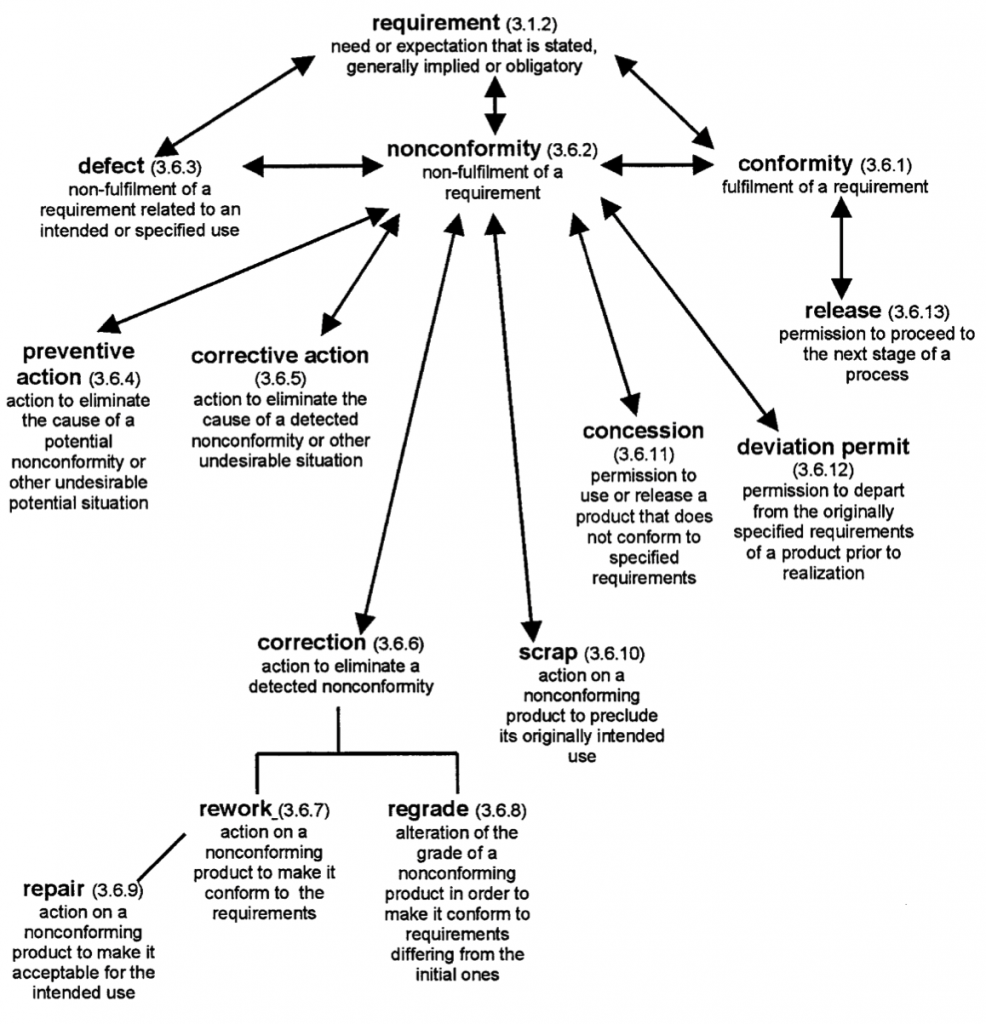I wrote extensively about quality inspections, the way the AQL limits lead to a pass/fail result, how to set up corrective actions in order to prevent the same issues from coming back, how to set up a QC plan to prevent issues and detect them as early as possible, and so on and so forth. One thing I haven’t covered is the breadth of options available when nonconforming products or materials (in other words, products that are not up to your standard) are found.
3 typical actions importers take when faced with substandard goods?
In the unfortunate event of being supplied with substandard goods, most importers think they can either:
- Accept it, sometimes with a rebate, or
- Refuse it, and hope it doesn’t get sold on the same market as good products through parallel channels, or
- Request that the supplier does rework.
The truth is, there are other options.
What else can be done with nonconforming products?
The other options are mentioned at the end of the ISO 9000:2015 standard (Quality management systems — Fundamentals and vocabulary) in this graph that shows the many actions that can be taken when and if nonconforming products occur:
(Click on the image to enlarge it)
Other options according to ASQ/ANSI
Another standard, ASQ/ANSI ID1:2021, gives a slightly different list of possible dispositions:
Hold – Organizations that provide for a product status of hold may do so for many reasons.
This is temporary, of course.
Inspect and sort – For a batch of parts, inspect them 100 percent and remove any nonconforming items.
This makes a lot of sense in many cases. If an inspector checks, say, 200 pcs picked randomly from a batch of 8,000 pcs, and 11 major defects were found, the quality manager may say “let’s check the whole batch one by one, only for those types of defects, before we make a decision.
An added benefit is, the defectives are put aside as part of that inspect & sort job.
Test – Product cannot be moved until test results are known to make final disposition for the product.
This is another one of these “we need to know more before making a decision” cases.
For example, there is a doubt about the impact of a defect on the ability of the product to fulfil its intended usage over time. Some reliability validation tests can help confirm the risk is low.
Repair – Perform additional operations so that the part is functional but does not meet specification.
This is “bringing the bad pieces up to a level that is acceptable for this time, even if it’s still not good”.
Rework – Perform additional operations so that the part meets specification.
This is really fixing the issues on the current batch. (Keep in mind, though, a product that has been reworked will usually not be as reliable & durable as a part that was good the first time.)
Scrap – Product can be recycled, put in a landfill, or etc. depending on the type of product
This is clear… throw it away. In some cases, a destruction job has to be witnessed, to make sure those products are not put on the market through a back door.
Waiver – An agreement between customer and supplier that the customer agrees that a requirement under its control, does not have to be fulfilled by the supplier. For military contracts, waivers apply to postproduction (manufacturing) of items.
For example: Parts were accidentally painted blue rather than red; the contractor would submit a waiver asking for acceptance of the nonconforming parts.
In some cases, there is an issue but the customer agrees it is inconsequential. That’s an acceptance, only for this time.
Concession – An agreement between a customer and supplier that includes a financial adjustment.
In other words, the supplier is allowed to ship the goods out, and generally offers a rebate to the customer.
This may be fine for aesthetic issues, but of course it is not possible for compliance issues, potential safety issues, etc.
Downgrade (Reapplication) – Certain materials can be downgraded or reclassified (or possibly found another use).
In such cases, the product’s price is typically cut even more than in a concession.
In some cases, it is sold as “second rate” by the customer, possibly in a different channel. Or the products are to be used for some tests that necessitate many samples. Or if may even be completely transformed, for example a plastic product that gets reground so it can become a totally different product.
******
How do you deal with nonconforming products or materials coming from your suppliers? Is there an action you typically take, such as accepting them with a rebate or do you rework them, perhaps? Have you used this opportunity to put in place corrective actions to develop the supplier’s processes etc so the issue/s didn’t occur again in future? Let me know by leaving a comment, please.


